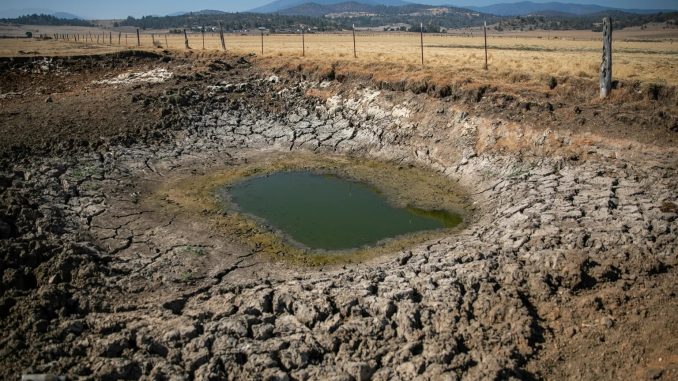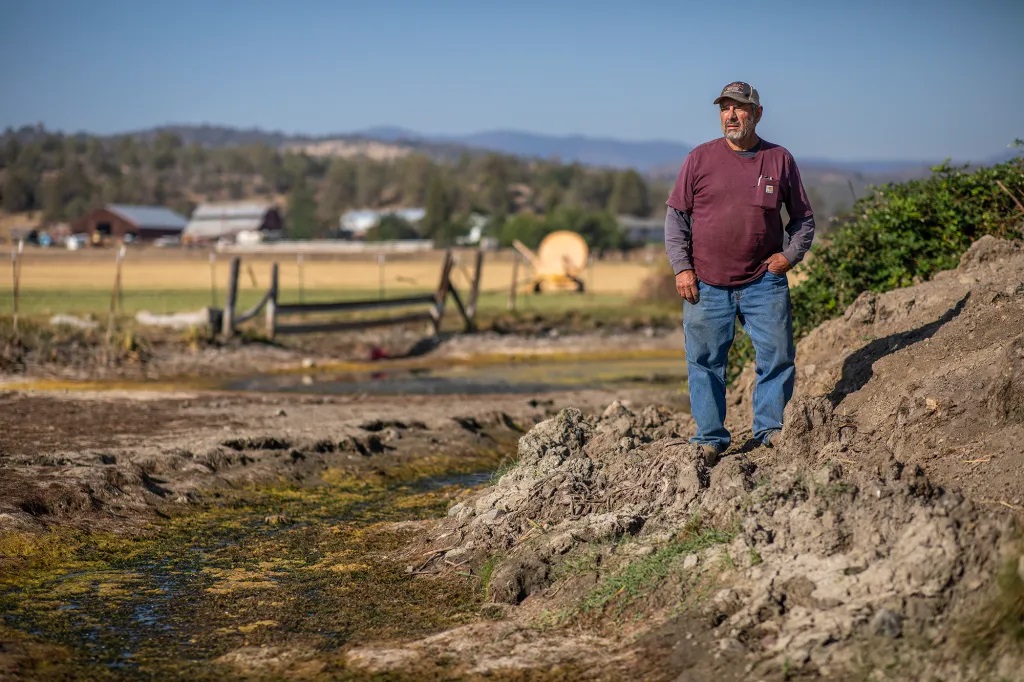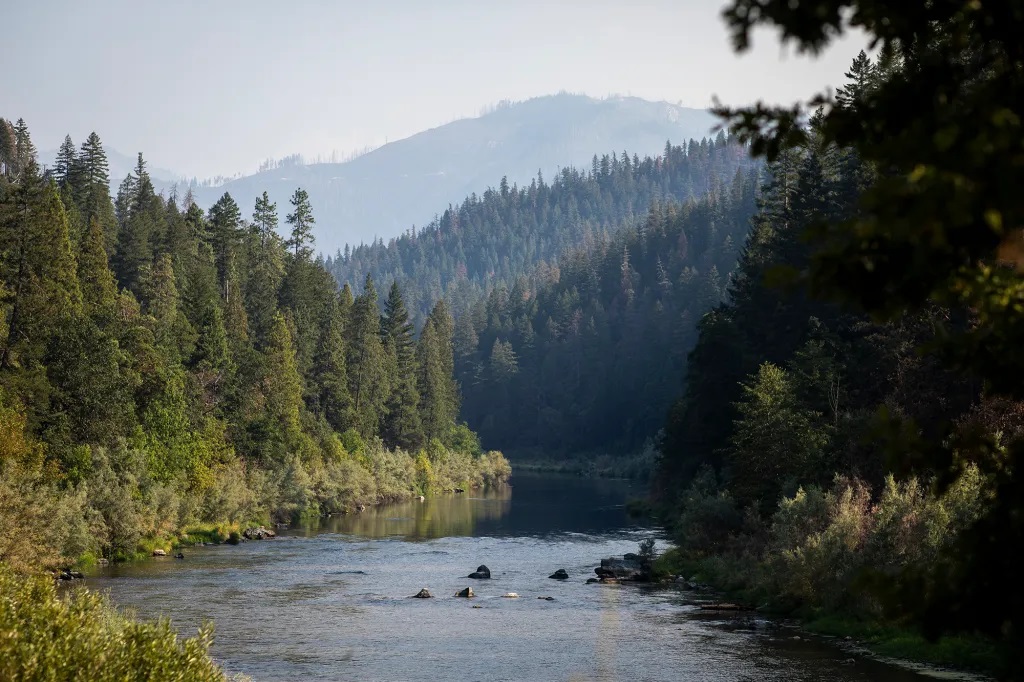
By Rachel Becker (for Cal Matters)
CalMatters is an independent public journalism venture covering California state politics and government. For more info, visit calmatters.org.
When ranchers violated an emergency order to stop pumping water from the drought-plagued Shasta River last year, state officials fined them $4,000, or roughly $50 each. Now California legislators are weighing a bill that would triple fines for such infractions—and could allow the penalty to climb higher than a million dollars.
Authored by Assemblymember Rebecca Bauer-Kahan, a Democrat from San Ramon, the bill cleared the Assembly in a 43 to 20 vote last week and is now awaiting discussion in Senate committees.
The proposed legislation aims to give California’s water enforcers more muscle to act swiftly and levy larger penalties for water agencies, irrigation districts and landowners who violate state orders and policies by pumping from rivers and streams.
Bauer-Kahan introduced AB 460 after CalMatters reported in November that the state had imposed minimal fines on about 80 Siskiyou County ranchers—served by the Shasta River Water Association—who had violated an emergency order to stop pumping. The river’s flows plunged by more than half, threatening ecosystems and rare fish such as salmon.
Yet in a public demonstration of the state’s limited powers, the ranchers kept the pumps on for eight days.
“Paying the fines was worth it to them to take what they took, and that shows a real weakness in what we have done,” Bauer-Kahan said. “It was so clear that our law was not working.”
The State Water Resources Control Board’s maximum fine under existing law is $500 per day. The state also can issue a cease and desist order, which carries maximum fines of $10,000 per day, but it requires a 20-day waiting period and allows the users to seek a public hearing. Such provisions allow the violations to continue for weeks.
“The board doesn’t have the tools to act quickly,” said Michael Kiparsky, water program director at the Center for Law, Energy & the Environment at UC Berkeley School of Law. “The fish don’t care if the lawyers are trying to figure out who’s right or wrong if they’re dead.”
Rick Lemos, a fifth generation rancher and board member of the Shasta River Water Association, said the ranchers turned their pumps on last August because their cattle were at risk without more water. Costs from hauling water and buying hay were climbing, and the ranchers faced the prospect of selling off cattle.

“We could have kept going for $500 a day,” said Rick Lemos, a fifth generation rancher and board member of the Shasta River Water Association.
Had the Assembly bill been in force then, the ranchers could have faced daily fines between $1,500 and $10,000, plus $2,500 for every acre-foot of water diverted, which could reach more than $1,000,000.
Lemos said if fines had reached $10,000 per day, “we definitely could have had to rethink it. That’s for damn sure.” Yet, he also added, “I’m not so sure we wouldn’t have done it again. When you got cattle out of water and you have no other options, what are you gonna do? “
“If you’ve got 5,000 head of cattle that are worth $1,200 apiece, and they’re starting to die. I mean, how much can you spend for eight or 10 days to remedy the problem?” he said.
The law would target landowners, water agencies and districts that take water from rivers and streams, not individual consumers who turn on their taps.
Sponsored by conservation groups—California Trout, the Planning and Conservation League and Trout Unlimited—the bill is also supported by the Karuk and Yurok Tribes.
“The fine doesn’t fit the crime,” Karuk Tribal Council Member Arron “Troy” Hockaday said. ”What’s gonna stop them from doing it again this year, or next year? Or anytime they want? I mean, you got 80 farmers only paying $50 apiece. They’re gonna keep doing it.”

But water providers, builders and agricultural groups oppose the bill, saying it is so broad that even those diverting water legally could be ensnared in the expanded water board powers.
“If [the bill] did nothing else but raise penalties, that would stop what went on on the Shasta,” said Kristopher Anderson, the Association of California Water Agencies’ legislative advocate. But he said, by expanding other authorities, “this bill systematically stacks the deck against water right holders in favor of the water board.”
One new authority would be issuing interim relief orders to stop diversions or address potential harms. In urgent cases, these could take effect immediately “to prevent imminent or irreparable injury to other legal users of water, or to instream beneficial uses,” the bill says. Water users who ignore an interim relief order could face fines of $10,000 per day and $2,500 per acre-foot diverted.
Jennifer Pierre, general manager of the State Water Contractors, an association of public water agencies, said vague definitions in the bill such as ‘irreparable injury’ create uncertainty over what water would actually be available to suppliers in the future, which could impede development.
Anderson added he would prefer to see enforcement run through the courts rather than state-issued fines—an avenue that the water board could have but did not pursue with the Siskiyou County ranchers.
But water board officials said in the Shasta River case, seeking a court order would have kicked off a lengthy, resource-intensive battle.
“You’ve got both parties who are going to be subject to extensive litigation and litigation costs,” said Yvonne West, director of the water board’s Office of Enforcement. “We thought we could react quicker… In hindsight, we see that we didn’t gain the compliance we were hoping for from those initial actions.”

Bauer-Kahan’s bill is one of several taking aim at the state’s byzantine, Gold Rush-era water rights system that state analysts warn has promised more water than is available. The system, which establishes priority among users, is facing mounting criticism for its history of inequality and exclusion of Native peoples and people of color.
Another bill would expand the state’s powers to curtail pumping from rivers and streams even by water users with claims that pre-date the state’s water rights law, enacted in 1914. A third would allow the board to investigate the legitimacy of senior water rights claims.
All three face opposition from builders, water providers and agriculture. So far they have cleared their houses of origin and are continuing through the Legislature.
California water watchers say it’s critical to bolster the state’s power to enforce water laws.
“Is the genie out of the bottle now?” Berkeley’s Kiparsky asked.
“What happens during the next drought now that it’s been very publicly demonstrated that water users can in essence treat the water board’s enforcement actions as an additional, and sometimes very modest, cost of doing business?”




Be the first to comment